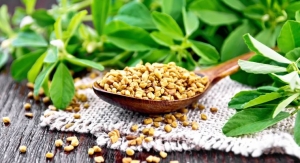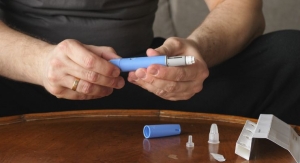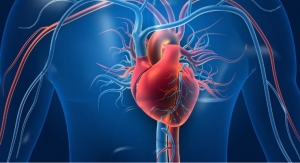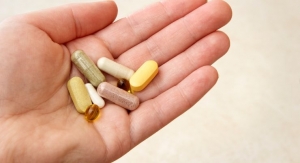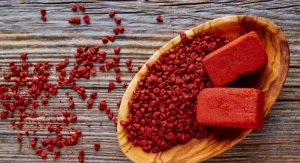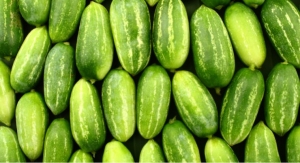05.01.01
Chromium
Chromium (Cr+3) is an essential trace element required for normal glucose metabolism1-4. It appears to act by enhancing insulin's actions, with increases in the number of insulin receptors, increased binding of insulin to the insulin receptor and increases in activation of the insulin receptor reported5-8. Because chromium is a nutrient, supplements are likely to be beneficial only in those people with chromium deficiencies.
Effects of chromium supplements on glycemic control have been studied in type 2 diabetes9-14, type 1 diabetes10, gestational diabetes15 and insulin resistance16. Chromium has also been shown to improve various aspects of dyslipidemia in diabetic subjects9,11,12. Overall results of research studies are mixed2, with some showing positive ef�fects9,10,15,16 and others negative or ambiguous results11,12,17. In general, research studies using higher doses9,13,14 and more bioavailable forms of chromium, such as chromium picolinate9,10,13-15, have shown more positive effects than studies using other forms of chromium12,17. Studies where subjects were possibly consuming low chromium diets or had other risk factors for chromium deficiency were also more likely to show positive effects9,13,15,16.
The most definitive support for the use of chromium supplements in type 2 diabetes is provided by a randomized double blind placebo controlled trial conducted in China9. In this study 180 subjects were randomized to placebo, 200 mcg chromium picolinate/day or 1000 mcg chromium picolinate/day for four months. Hemoglobin A1c levels significantly declined in both groups at four months compared to placebo and fasting blood glucose levels, two-hour glucose tolerance test glucose and insulin levels and cholesterol all decreased in the high dose supplement group at four months. The presence of a dose dependent response and clinically significant decreases in Hemoglobin A1c, (decreases are similar in magnitude to that seen with many oral medications for type 2 diabetes), is encouraging, although questions still remain as to the applicability of this study in the U.S. where ethnicity, dietary chromium intakes and average BMI of people with diabetes differ from that of the study subjects.
Dietary chromium (Cr+3) toxicity is believed to be low in comparison to other trace elements18. The Environmental Protection Agency sets toxicity rates at intakes greater than 1 mg/kg body weight/day2. Supplements up to 200 mcg are unlikely to be harmful but the safety of higher doses, which have been shown to be more effective, is less well established.
Vanadium
The trace element vanadium has not been established as an essential nutrient and deficiency has not been documented in humans3,4,19. Vanadium's chemical structure is similar to that of phosphorus and has been hypothesized to act as a phosphate analog and insulinmimetic agent; increasing activation of the insulin receptor and subsequent intracellular signaling pathways20,21.
In animal models vanadium has been shown to facilitate glucose uptake and metabolism, lipid and amino acid metabolism, improve thyroid function and enhance insulin sensitivity20,21. Research in humans has focused on type 2 diabetes22-25, although animal studies suggest vanadium may have potential benefit in both type 1 and type 2 diabetes20. In subjects with type 2 diabetes vanadium suppressed hepatic glucose output23,24 and increased glucose oxidation23,24 and insulin sensitivity in some22-24 but not all studies25. Vanadium supplementation also decreased fasting blood glucose levels23-25, Hemoglobin A1c levels23,24 and cholesterol levels22. Overall, effects of pharmacological doses of vanadium appear to have a mild effect on insulin sensitivity and glucose utilization in type 2 diabetes. There is no information on the long term effects of vanadium supplements in diabetes.
Because vanadium is needed in such small quantities, relatively small doses have the potential for significant adverse side effects with chronic consumption19. Limiting daily vanadium intake to less than 100 mcg/d has been recommended19. Researchers are currently working to develop forms of vanadium that are better absorbed and have fewer side effects3,19,26.
Nicotinamide
The vitamin niacin (vitamin B3) occurs in two forms, nicotinic acid and nicotinamide. The active coenzyme forms of the vitamin (NAD and NADP) are essential for normal carbohydrate, lipid and protein metabolism1,4. As a vitamin the two compounds function similarly but in pharmacological doses they have distinct effects. Nicotinic acid (1-3 g/d) has been used as an effective treatment for dyslipidemia4, although its use in people with diabetes has been limited because of negative effects on glycemic control27. Pharmacological doses of nicotinamide are being studied for their potential benefit in the prevention28-31 and treatment of diabetes32-37.
Animal studies suggest that nicotinamide acts by protecting pancreatic beta cells from autoimmune destruction by maintaining intracellular NAD levels and inhibiting the enzyme poly (ADP-ribose) polymerase (PARP), (an enzyme involved in DNA repair). Excessive PARP induction results in depletion of cytoplasmic NAD levels, induction of immunoregulatory genes and cellular apoptosis (programmed cell death).
Clinical trials evaluating the effect of nicotinamide supplementation on the development28-31 and progression of type 132-36 and type 2 diabetes37 have had mixed results with the largest trial, the European Nicotinamide Diabetes Intervention Trial (ENDIT), not yet completed31. At this time nicotinamide appears to be most effective in people recently diagnosed with diabetes, people at high risk for developing diabetes and people who develop type 1 diabetes after puberty32-35. Results better support an effect on preservation of beta cell function32 than diabetes prevention29.
Magnesium
The mineral magnesium functions as an essential cofactor for over 300 enzymes in the body. It is essential for all energy dependent transport systems, glycolysis, oxidative energy metabolism and biosynthetic reactions38,39. Magnesium deficiency has been associated with hypertension, insulin resistance, glucose intolerance, dyslipidemia, increased platelet aggregation, cardiovascular disease and complications of diabetes and pregnancy38-42. Whether poor magnesium status plays a causal role in these disorders or is simply associated with them has not been determined.
Magnesium is one of the more common micronutrient deficiencies in diabetes43. Decreased magnesium levels and increased urinary magnesium losses have been documented in subjects with both type 1 and type 2 diabetes40-48. Low dietary magnesium intakes have been associated with increased incidence of type 2 diabetes in some49,50 but not all studies51. Hypomagnesemia in diabetes is most likely due to increased urinary losses38,40,41. Low calorie and poor quality diets are more likely to be inadequate in magnesium content. People with diabetes may have diets low in magnesium52.
The American Diabetes Association recommends assessment of magnesium status in those patients at risk for deficiency and supplementation where deficiency can be documented41. Supplements up to 350 mg/day are appropriate. Magnesium is a relatively non-toxic substance in people with normal renal function but can lead to hypermagnesemia in people with impaired renal function38.
Vitamin E
Vitamin E is an essential fat soluble vitamin and functions primarily as an antioxidant4. Low levels of vitamin E have been associated with increased incidence of diabetes53 and some research suggests people with diabetes have decreased levels of antioxidants54-56. Additional evidence indicates that people with diabetes may also have greater antioxidant requirements, due to increased free radical production secondary to hyperglycemia57-59. Vitamin E supplementation in diabetes appears to decrease markers of oxidative stress54,58,60-62.
Clinical trials of subjects with diabetes have investigated the effect of vitamin E on insulin sensitivity60,63-65, glycemic control63,65-68, protein glycation60,62,63,65,66,68, microvascular complications of diabetes56,68-70, cardiovascular disease60,62,71 and diabetes prevention72. The effects of vitamin E supplementation on CVD risk factors in diabetes is mixed with positive effects on lipid levels or lipid oxidation noted in some60,66,67,73,74, but not other60,65,73, intervention studies. Recently a large intervention trial in people with diabetes found no beneficial effect of 400 IU of d-alpha-tocopherol/day, for 4.5 years, on cardiovascular outcomes71. Higher doses of vitamin E, 800 IU/day or more, and d-alpha-tocopherol have generally been more effective in clinical research studies.
Vitamin E is relatively non-toxic1, with few negative side effects documented in long-term supplement trials4,71,74,75. Doses of vitamin E up to 400 IU are generally believed to be safe4. Doses over 800 IU may alter blood clotting although supplement trials that have monitored prothrombin times in subjects have noted no increases4,76.
-B.O.
References
1. National Research Council. Recommended Dietary Allowances (10th ed.). Washington DC, National Academy Press, 1989.
2. Anderson RA. Chromium, glucose intolerance and diabetes. J Am Col Nutr, 1998;17:548-555.
3. Food and nutrition Board, Institutes of Medicine. Dietary reference intakes for vitamin A, vitamin K, boron, chromium, copper, iodine, manganese, molybdenum, nickel, silicon, vanadium, and zinc. Washington DC, National Academy Press, 2001.
4. Sarubin A. The Health Professional's Guide to Popular Dietary Supplements, Chicago IL, The American Dietetic Association, 2000.
5. Anderson RA. Nutritional Factors influencing the glucose/insulin system: chromium. J Am Col Nutr, 1997; 16:404-410.
6. Vincent JB. Quest for molecular mechanism of chromium action and its relationship to diabetes. Nutr Rev, 2000;58:67-72.
7. Mertz W. Interaction of chromium with insulin: a progress report. Nutr Rev, 1998;56:174-177.
8. Vincent JB. Elucidating a biological role for chromium at a molecular level. Acc Chem Res, 2000;53:503-510.
9. Anderson RA, Cheng N, Bryden NA, Polansky MM, Cheng N, Chi J, Feng J. Beneficial effects of chromium for people with dia�betes. Diabetes 46:1786-1791, 1997.
10. Ravina A, Slezak L, Rubal A, Mirsky N. Clinical use of trace element chromium (III) in the treatment of diabetes mellitus. J. Trace Elem. Exp. Med 8:183-1190, 1995.
11. Lee NA, Reasner CA. Beneficial effect of chromium supplementation on serum triglycerides in NIDDM. Diabetes Care, 1994;17:1449-1452.
12. Abraham AS, Brooks BA, Eylat U. The effect of chromium supplementation on serum glucose and lipids in patients with non-insulin-dependent diabetes mellitus. Metab. Clin. Exp. 41:768-771, 1992.
13. Cefalu WT, Bell-Farrow AD, Stegner J, Wang ZQ, King T, Morgan, Terry JG. Effect of chromium picolinate on insulin sensitivity in vivo. J. Trace Elem. Exp. Med. 12:71-83, 1999.
14. Cheng N, Zhu X, Shi H, Wu W, Chi J, Cheng J, Anderson RA. Follow-up survey of people in China with type 2 diabetes mellitus consuming supplemental chromium. J. Trace Elem. Exp. Med. 12:55-60, 1999.
15. Jovanovic L, Gutierrez M, Peterson CM. Chromium supplementation for women with gestational diabetes mellitus. J. Trace Elem. Exp. Med 12:91-97, 1999.
16. Anderson RA, Polansky MM, Bryden NA, Canary JJ. Supplemental-chromium effects on glucose, insulin, glucagon, and urinary chromium losses in subjects consuming controlled low-chromium diets. Am J Clin Nutr, 1991;54:909-916.
17. Trow LG, Lewis J, Greenwood RH, Sampson MJ, Self KA, Crews HM, Fairweather-Tait SJ. Lack of effect of dietary chromium supplementation on glucose tolerance, plasma insulin and lipoprotein levels in patients with type 2 diabetes. Int J Vitam Nutr Res, 2000;70:14-18.
18. American Diabetes Association Guide to Medical Nutrition Therapy for Diabetes. Franz MJ, Bantle JP, Eds., Alexandria VA, American Diabetes Association, 1999.
19. Harland BF, Harden-Williams BA. Is vanadium of nutritional importance yet? J Am Diet Assoc, 1994;94:891-894.
20. Poucheret P, Verma S, Grynpas MD, McNeil JH. Vanadium and diabetes. Mol Cel Biol, 1998;188:73-80.
21. Cam MC, Brownsey RW, McNeil JH. Mechanisms of vanadium action: insulin mimetic or insulin-enhancing agent? Can J Physiol Pharmacol, 2000;78:829-847.
22. Goldfine A, Simonson D, Folli F, Patti ME, Kahn R. Metabolic effects of sodium metavanadate in humans with insulin-dependent and non-insulin dependent diabetes mellitus in vivo and in vitro studies. J. Clin. Endocrinol. Metab. 1995;80:3311-3320.
23. Halberstam M, Cohen N, Shlimovich P, Rossetti L, Shamoon H. Oral vanadyl sulfate improves insulin sensitivity in NIDDM but not obese nondiabetic subjects. Diabetes, 1996;45:659-666.
24. Cohen N, Halberstam M, Schilmovich P, Chang CJ, Shamoon H, Rosetti L. Oral vanadyl sulfate improves hepatic and peripheral insulin sensitivity in patients with non-insulin dependent diabetes mellitus. J. Clin. Invest. 1995;95:2501-2509.
25. Boden G, Chen X, Ruiz J, van Rossum GD, Turco S. Effects of vanadyl sulfate on carbohydrate and lipid metabolism in patients with non-insulin dependent diabetes mellitus. Metabolism, 1996;45:1130-1135.
26. Srivista AK. Anti-diabetic and toxic effects of vanadium compounds. Mol Cel Biol, 2000;206:177-182.
27. American Diabetes Association. Management of dyslipidemia in adults with diabetes. Diabetes Care, 1998;21:179-82.
28. Greenbaum CJ, Kahn SE, Palmer JP. Nicotinamides effects on glucose metabolism in subjects at risk for IDDM. Diabetes, 1996;45:1631-1634.
29. Lampeter EF, Klinghammer A, Scherbaum WA, Heinze E, Haastert B, Giani G, Kolb H, and the DENIS group. The deutsch nicotinamide intervention study an attempt to prevent type 1 diabetes. Diabetes, 1998;47:980-984.
30. Elliott RB, Pilcher CC, Fergusson DM, Stewart AW. A population based strategy to prevent insulin-dependent diabetes using nicotinamide. J Ped Endo Metab, 1996;9:501-509.
31. Gale EAM. Nicotinamide: potential for the prevention of type 1 diabetes? Horm Metab Res, 1996;28:361-364.
32. Pozzilli P, Browne PD, Kolb H, The Nicotinamide Trialists. Meta-analysis of nicotinamide treatment in patients with recent-onset IDDM. Diabetes Care, 1996;19:1357-1363.
33. Pozzilli P, Vissali N, Girhlanda G, Manna R, Andreani D. Nicotinamide increases c-peptide secretion in patients with recent onset type 1 diabetes. Diab Med, 1989;6:568-572.
34. Pozzilli P, Vissali N, Signore A, Baroni MG, Buzzetti R, Cavallo MG, Boccuni ML, Fava D, Gragnoli C, Andruni D et al. Double-blind trial of nicotinamide in recent onset IDDM (the IMDIABIII study). Diabetologia, 1995;38:848-852.
35. Vissali N, Cavallo MG, Signore A, Baroni MG, Buzzetti R, Fioriti E, Mesturino C, Fiori R, Lucentini L, Matteoli MC, Crino A, Lerbi S, Spera S, Teodonio C, Paci F, Amoretti R, Pisano L, Suraci C, Multari G, Sulli N, Cervoni M, DeMattia G, Faldetta MR, Boscherini B, Pozzilli P, et al. A multicenter, randomized trial of two different doses of nicotinamide in patients with recent-onset type 1 diabetes (the IMDIABVI). Diabetes/Metabolism Research Reviews, 1999;15:181-185.
36. Lewis CM, Canafax DM, Sprafka JM, Barbosa JJ. Double-blind randomized trial of nicotinamide on early-onset diabetes. Diabetes Care 1992;15:121-123.
37. Polo V, Saibene A, Pontiroli. Nicotinamide improves insulin secretion and metabolic control in lean type 2 patients with secondary failure to sulphonylureas. Acta Diabetol, 1998;35:61-64.
38. de Valk H. Magnesium in diabetes mellitus. J of Med, 1999;54:139-146.
39. White JR, Campbell RK. Magnesium and diabetes: a review. Annals of Pharmacotherapy, 1993;27:775-780.
40. Sarsis NEL, Marvaala E, Karppanen H, Khawaja JA, Lewenstam A. Magnesium an update on physiological, clinical and analytical aspects. Clinica Chimica Acta, 2000;294:1-26.
41. American Diabetes Association. Magnesium supplementation in the treatment of diabetes. Diabetes Care 1992;15:1065-1067.
42. Paolisso G, Barbagallo M. Hypertension, diabetes mellitus, and insulin resistance the role of intracellular magnesium. Am J Hyper, 1997;10:346-355.
43. Campbell RK, Nadler J. Magnesium deficiency and diabetes. Diab Educ, 1992;18:17-19.
44. Mather HM, Nisbert JA, Burton GH, Poston GJ, Bland JM, Bailey PA, Pilkington TRE. Hypomagnesemia in diabetes. Clin Chem Acta, 1979;95:235-242.
45. Pickup JC, Chusney GD, Crook MA, Viberti GC. Hypomagnesemia in IDDM patients with microalbuminuria and clinical proteinuria. Diabetelogia 1994;37:639.
46. Resnick LM, Altura BT, Gupta RK, Laragh JH, Alderman MH, Altura BM. Intracellular and extracellular magnesium depletion in type 2 (non-insulin dependent) diabetes. Diabetelogia, 1993;36:767-770.
47. Eibl NL, Kopp HP, Nowak HR, Schnack CJ, Hopmeier PG, Schernthaner G. Hypomagnesemia in type II diabetes: effect of a 3-month replacement therapy. Diabetes Care, 1995;18:188-192.
48. Sjogren A, Floren C-H, Nilsson A. Magnesium deficiency in IDDM related to level of glycosylated hemoglobin in diabetes. Diabetes, 1986;35:459-463.
49. Meyer KA, Kushi LH, Jacobs DR, Slavin J, Sellers TA, Folsom AR. Carbohydrates, dietary fiber, and incident type 2 diabetes in older women. Am J Clin Nutr, 2000;71:921-30.
50. Salmeron J, Ascherio A, Rimm EB, Colditz GA, Spiegelman D, Jenkins DJ, Stampfer MJ, Wing AL, Willet WC. Dietary fiber, glycemic load and risk of NIDDM in men. Diabetes Care, 1997;20:545-550.
51. Kao WHL, Folsom AR, Nieto FJ, Mo J-P, Watson RL, Brancati FL. Serum and dietary magnesium and the risk of type 2 diabetes mellitus: the Atherosclerosis Risk in Communities (AIRIC) Study. Arch Int Med, 1999;159:2151-9.
52. Schmidt L, Heins J. Low magnesium intake among NIDDM patients: a call for concern. Diabetes, 1993;42(Suppl 1):A49.
53. Salonen JT, Nyyssonen K, Tuomainen TP, Maenpaa PH, Korpela H, Kaplan GA, Lynch J, Helmrich SP, Salonen R. Increased risk of non-insulin-dependent diabetes mellitus at low plasma vitamin E concentrations: a four year study in men. Br Med J, 1995;311:1124-1127.
54. Jain K, McVie R. Effect of glycaemic control, race (white versus black) and duration of diabetes on reduced glutathione content in erythrocytes of diabetes patients. Metabolism, 1994;43:306-309.
55. Chuchi E, Odetta P, Prando R. Relationship between glutathione and sorbitol concentrations in erythrocytes from diabetic patients. Metabolism, 1996;45:611-613.
56. Rema M, Mohan V, Bhaskar A, Shmmugasundaram KR. Does antioxidant stress play a role in diabetic retinopathy? Indian J Opthamol 1995;43:17-21.
57. Wolff SP, Dean RT. Glucose autoxidation and protein modification: the potential role of autoxidative glycosylation in diabetes. Biochem J, 1987;245:243-250.
58. Sharma A, Kharb S, Chugh SN, Kakkar R, Singh GP. Evaluation of oxidative stress before and after control of glycemia and after vitamin E supplementation in diabetic patients. Metabolism, 2000;49:160-162.
59. Ceriello A, Bortolotti N, Motz E, Crescentini A, Lizzio S, Russo A, Tonutti L, Taboga C. Meal-generated oxidative stress in type 2 patients. Diabetes Care, 1998;21:1529-1533.
60. Reaven PD, Herold DA, Barnett J, Edelman S. Effects of vitamin E on susceptibility of low-density lipoprotein and low-density lipoprotein subfractions to oxidation and on protein glycation in NIDDM. Diabetes Care, 1995;18:807-816.
61. Devaraj S, Jialal I. Low-density lipoprotein postsecretory modification, monocyte function, and circulating adhesion molecules in type 2 diabetic patients with and without macrovascular complications. Circulation, 2000;102:191-196.
62. Fuller CJ, Chandalia M, Garg A, et al. RRR-alpha toccopherol supplementation at pharmacological doses decreases LDL oxidative susceptibility but not protein glycation in patients with diabetes mellitus. Am J Clin Nutr, 1996;63:753-759.
63. Paolisso G, D'Amore A, Giugliano D, Cereillo A, Varricchio M, D'Onofrio F. Pharmacological doses of vitamin E improve insulin action in healthy subjects and non-insulin dependent diabetic patients. Am J Clin Nutr, 1993;57:650-656.
64. Skrha J, Sindelka G, Kvasnicka J, Hilgertova J. Insulin action and fibrinolysis influenced by vitamin E in obese type 2 diabetes mellitus. Diab Res Clin Prac, 1999;4:27-33.
65. Gomez-Perez FJ, Valles-Sanchez VE, Lopez-Alvarenga JC, Pascuali JJI, Orellana RG, Padilla OBP, Salinas EGR, Rull JA. Vitamin E modifies neither fructosamine nor HbA1c levels in poorly controlled diabetes. Rev Invest Clin, 1996;48:421-424.
66. Jain SK, McVie R, Jaramillo JJ, Palmer M, Smith T. Effect of modest vitamin E supplementation on blood glycated hemoglobin and triglyceride levels and red cell indices in type 1 diabetic patients. J Am Coll Nutr, 1996;15:458-461.
67. Paolisso G, D'Amore A, Galzerano D, Balbi V, Giugliano D, Varriccho M, D'Onofrio F. Daily vitamin E supplements improve metabolic control but not insulin secretion in elderly type 2 diabetic patients. Diabetes Care, 1993;16:1433-1437.
68. Cerillo A, Giugliano D, Quataro A, Donzella C, Dipalo G, Lefebrve PJ. Vitmin E reduction of protein glycosylation in diabetes. Diabetes Care, 1991;14:68-72.
69. Tutuncu NB, Bayraktar N, Varli K. Reversal of defective nerve conduction with vitamin E supplementation in type 2 diabetes. Diabetes Care, 1998;21:1915-1918.
70. Bursell SE, Clermont AC, Aiello LP, Aiello LM, Schlossman DK, Feener EP, Laffel L, King GL. High-dose vitamin E supplementation normalizes retinal blood flow and creatinine clearance in patients with type 1 diabetes. Diabetes Care, 1999;22:1245-1251.
71. Yusuf S, Dagenais G, Pogue J, Bosch J, Sleight P. Vitamin E supplementation and cardiovascular events in high-risk patients. The Heart Outcomes Prevention Evaluation Study Investigators. N Engl J Med, 342:154-160, 2000.
72. Pozzilli P, et al., The IMDIAB study group. Vitamin E and nicotinamide have similar effects in maintaining residual beta cell function in recent onset insulin-dependent diabetes (the IMDIAB IV study). E J Endo, 1997;137:234-239.
73. Jain SK. Should high-dose vitamin E supplementation be recommended to diabetic patients? Diabetes Care, 1999;22:1242-1244.
74. Jilal I, Grundy SM. Effect of dietary supplementation with alpha-tocopherol on the oxidative modification of low-density lipoprotein. J Lipid Res, 1992;33:899-906.
75. Stephens NG, Parsons A, Schofield PM, Kelly F, Cheeseman K, Mitchinson MJ. Randomized, controlled trial of vitamin E in patients with coronary disease: Cambridge Heart Antioxidant Study. Lancet 1996;347:781-786.

